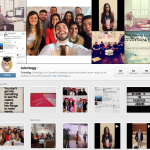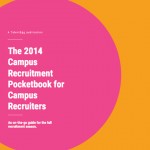Updating your campus career website? Good call. Your campus career website is like the virtual front door to your organization and, like a home, it needs some serious curb appeal to get students and grads interested in what you’re selling: your career opportunities.
No matter how candidates arrive at your website – via your TalentEgg profile, Twitter account, Facebook page or LinkedIn page – you risk losing them pretty quickly if your website is difficult to navigate or lacking the information students and grads need to make good decisions about where to start their careers.
We asked 200 top students for their feedback on employers’ campus career websites during the judging period for the 2013 TalentEgg National Campus Recruitment Excellence Awards. Generation Y lives online and, in co-ordination with your presence on social media and career websites like TalentEgg, your campus career website plays an important role in how they learn about and engage with your employer brand.
To start, let’s take a look at the winners and finalists in the Best Campus Career Website category over the last two years:
2013
|
2012
|
 Bell (winner) Bell (winner)Visit website |
 PwC Canada (winner) PwC Canada (winner)Visit website |
 eHealth Ontario (finalist) eHealth Ontario (finalist)Visit website |
 ConocoPhillips Canada (finalist) ConocoPhillips Canada (finalist)Visit website |
 Grant Thornton (finalist) Grant Thornton (finalist)Visit website |
 GE Canada (finalist) GE Canada (finalist)Visit website |
What do these winners and finalists have in common? Well, many feature bright colours, easy-to-use navigation, pictures and videos of students and recent graduates, and detailed information about and access to student and entry level career opportunities, of course.
Perhaps not surprisingly, these are also the elements that students praised in their feedback about employers’ campus career websites. Here’s a word cloud of the top 50 most-mentioned words from the thousands of pieces of feedback they submitted about the Best Campus Career Website applications:

What students want:
A clean, simple design
When students visit your campus career website, they likely have one of two objectives: 1) Learn more about your organization, or 2) apply for a job. If it takes them dozens of clicks and dead ends resulting in frustration, they’re going to move on before they develop a strong connection with your organization or apply for a job.
To create an effective campus career website, you don’t have to reinvent the wheel. Students prefer websites with clean, simple designs, that are easy to use and navigate. What does that mean?
- Have a low text-to-graphics ratio: Text should be used sparingly in favour of graphics, photos and videos.
- Be concise: When it comes to text, aim for quality over quantity, and be ruthless about which information stays and which goes.
- Use colour: If your corporate website is drab, try to introduce some bright colours (within your brand, of course) to capture the attention of young job seekers.
- Increase the font size: Many students complained about text that was too small and therefore difficult to read. If yours is on the small size, increase it by a point or two.
Watch this Canadian HR Reporter video from the 2012 TalentEgg National Campus Recruitment Excellence Awards and Conference for an in-depth explanation about how GE Canada created its Top-3 campus career website:
Easy-to-use navigation
Navigation was, by far, the most-commented-on feature of employers’ websites. Here’s what one student judge said about Bell’s winning website, a sentiment that was echoed by nearly every student who voted for Bell to win:
“Extremely organized and neat. The most engaging part of this website is the layout of the content, images, etc. It was just fantastic navigating through your website with ease.”
Second year student, Schulich School of Business, York University
The student judges said navigation should be easy to find (either at the top or left-hand side of the website) and remain accessible on every single page. Don’t make them click their “back” button to get back to the navigation!
They expect a seamless experience and are easily frustrated by website errors, such as broken or non-functioning links. Test the links on your campus career website – both internal and external – regularly to ensure they are working properly.
Demographic-specific content
When it comes to this demographic, general career websites just don’t cut it. Students and new grads expect to be able to find detailed career information that pertains specifically to them and the opportunities they’re interested in, as well as representatives from your organization that they can relate to (i.e., student and entry level employees).
If possible, go a level deeper and provide different information for students and graduates, as well as about the different types of career paths at your organization. Bell’s winning website, for example, immediately creates a tailored experience by asking visitors to choose whether they are a student or a graduate, and then navigating them to the content that is most appropriate for them.
More: Details on how PwC Canada developed a winning campus career website.
Whatever you do, don’t try to pass wordy marketing messages off as high-quality career content – they’ll notice. Keep marketing messages brief and focus on providing real information about your organization, career opportunities and how to get hired.
Quick win: If you don’t already have it, add a Frequently Asked Questions (FAQ) page to your campus career website and compile answers to all of the often-repeated questions you field from students at on-campus events and via social media throughout the year.
Testimonials from real students and grads
The most powerful element of your campus career website should be genuine testimonials from real student and recent graduate employees. Videos are best, but written testimonials featuring photos of the employee are sufficient as well.
But remember, a testimonial on its own isn’t enough. Specify their name, current role, post-secondary program, school and graduation year to build a stronger connection with candidates from similar backgrounds or with similar aspirations.






0 Comments
1 Pingback